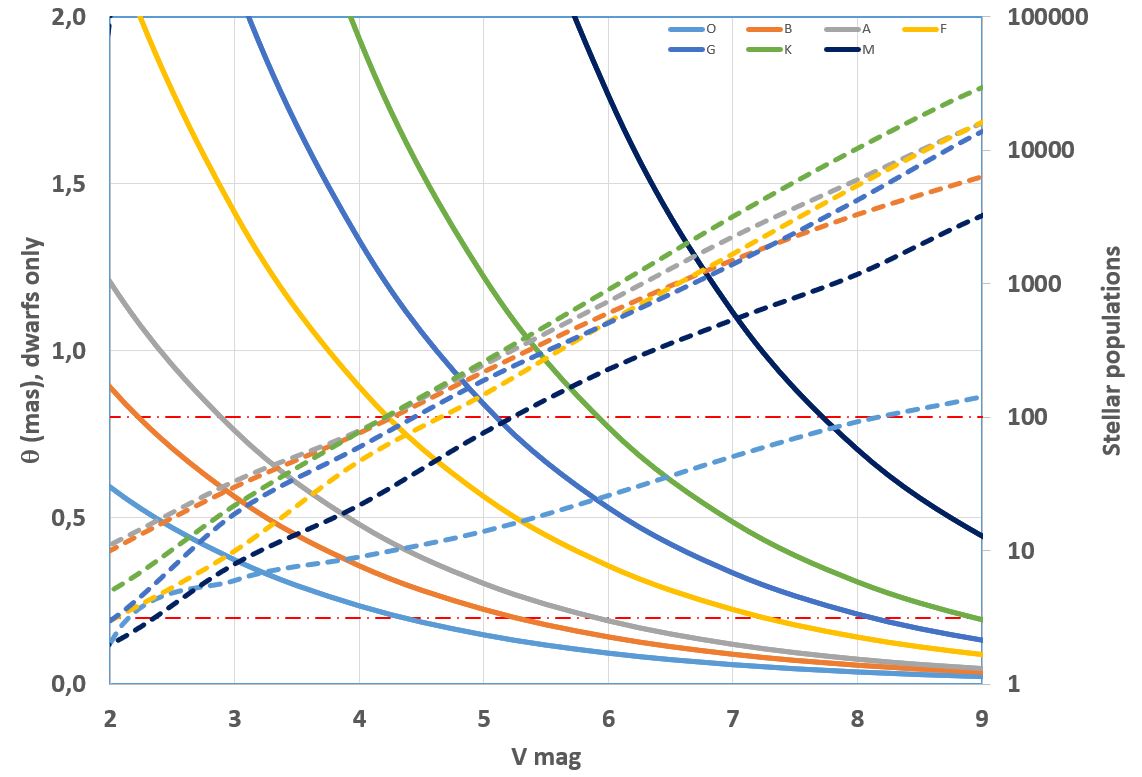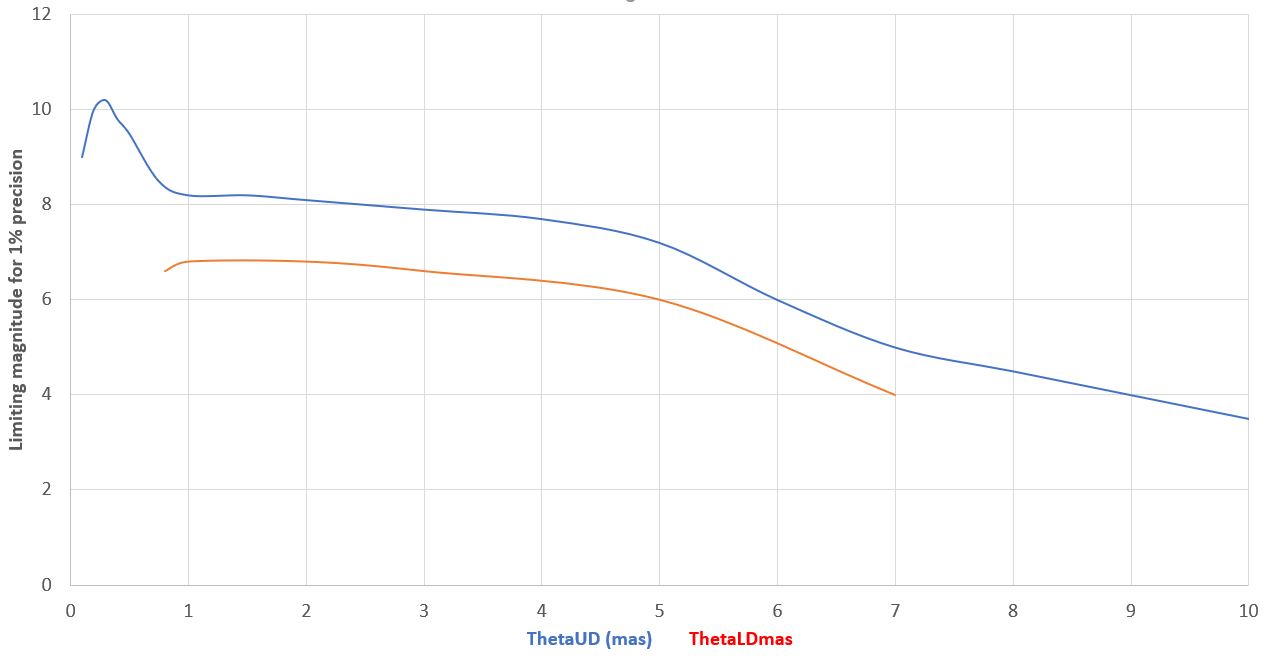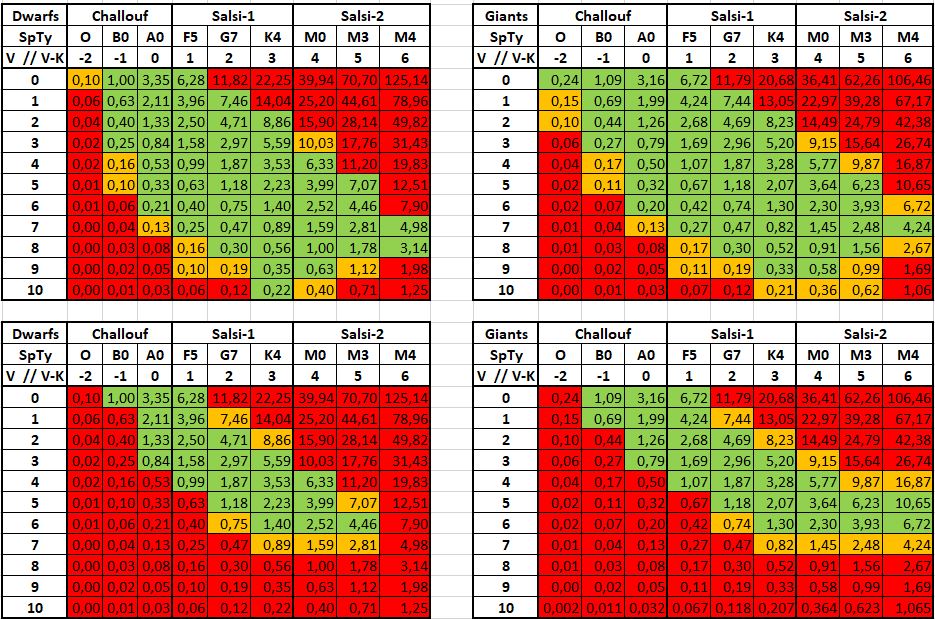The CHARA/SPICA project aims at providing the astronomical community with a large and homogeneous set of measured stellar parameters over the Hertzsprung-Russel (HR) diagram. Modern, accurate, and parametrized statistical Surface-Brightness-Color (SBC) relations will be extracted for a renewed vision of stellar physics, beyond Gaia in terms of benchmarking and accuracy. The overall objective is to support the science analysis of many new projects, like the PLATO or ARIEL mission.
It is based on a survey of ~1000 stars that will be observed with a new visible interferometric instrument CHARA/SPICA (Stellar Parameters and Images with a Cophased Array) assisted by a near-infrared fringe tracker. The project is built on the recent technological advances and on the studies developed these last years by our group. It is supported by a science group of more than 50 persons composed of experts of exoplanet host stars, asteroseismology, SBC relations and distance scale (Araucaria project), PLATO and ARIEL space missions experts, and specialists of interferometric image reconstruction.
Reference papers for CHARA/SPICA (see also OLBIN Publication Database)
D. Mourard, P. Bério, K. Perraut et al., JOSA-A, Vol.34, N° 5, A37 (2017) (![]() pdf)
pdf)
D. Mourard, N. Nardetto, et al., SPIE Conf. 10701, (2018) (![]() pdf)
pdf)
P. Berio, Y. Bresson, J.M. Clausse et al., SPIE Conf. Vol. 9146 (2014) (![]() pdf)
pdf)
M.A. Martinod, D. Mourard, P. Bério et al., A&A (2018) (![]() pdf)
pdf)
C. Pannetier, D. Mourard, P. Bério et al., SPIE 2020 (arxiv)
D. Mourard, P. Bério, C. Pannetier et al., SPIE 2022, SPICA-VIS (http://arxiv.org/abs/2210.09096)
C. Pannetier, P. Bério, D. Mourard et al., SPIE 2022, SPICA-FT (http://arxiv.org/abs/2210.09042)
Study of CHARA/SPICA performance:![]() SPICA-Perf-2021.pdf
SPICA-Perf-2021.pdf
The discovery and characterization of earth-like planets is one of the major challenges of Science, and even beyond Astronomy. Indirect methods like radial velocity measurements and transit photometry continue to dominate the domain, despite an important need for additional complementary observations to reject false detection or to reach a detailed characterization. Direct imaging techniques start to play a critical role and pushing their limits is one of the main drivers of the development in adaptive optics or coronagraphs. But all these techniques share a common intrinsic limitation related to the poor knowledge of the host star and the strong dependence to sophisticated stellar models. Optical long baseline interferometry brings the necessary high angular resolution view and has the potential of a detailed characterization of stars for a better knowledge of planets. Moreover, astronomers are routinely using fundamental stellar laws in many science topics. But these laws are often based on inhomogeneous or limited samples. It is clear today that reliable measurements of fundamental stellar parameters are critical for constraining the models. If the last 10 years have brought a very interesting and fundamental renewal of stellar astrophysics, the main targets were faint (V>8), and indirect methods for determining the stellar parameters have been used generally. Calibrating these indirect methods on direct measurements and moreover preparing the arrival of new data on brighter systems with K2, TESS, CHEOPS, and PLATO, supports the idea of massively exploring this field of research. Our project aims at establishing a homogeneous catalogue of about 1000 stellar diameters over the whole HR diagram. This will be the fundamental ingredient of a new foundation of fundamental stellar parameters and of statistical laws like SBC relations.

A statistical study of the Northern Sky (dec>-30°) in terms of angulari diameter (left scale and plain lines) and number of stars (right scale, dashed lines) as a function of magnitude and spectral type. Two limits (dash-point in red) are indicated: 0.2mas corresponds to the smallest angular diameter that will be measured; 0.8mas is the lower limit for the measurement of the limb darkening and for surface imaging






